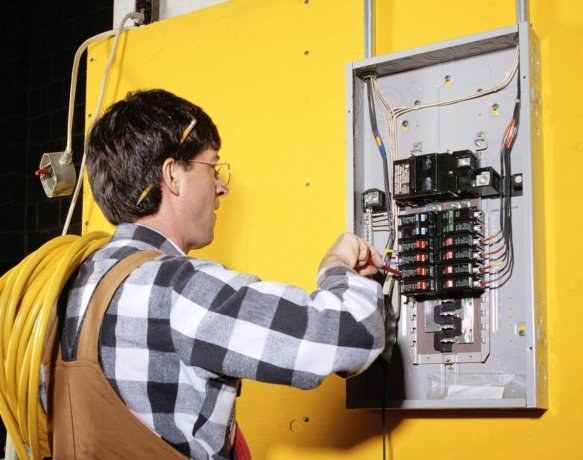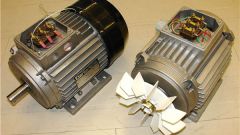Linear is called the voltage between two phase wires, sometimes referred to as interphase or phase-to-phase. The phase is the voltage between the neutral conductor and one of phase. In normal operation line voltage the same phase and exceed 1.73 times.
Three-phase circuit has several advantages compared to single-phase and multiphase, with their help you can easily obtain the rotational circular magnetic field, which provides the asynchronous motors. Voltage three-phase circuit is estimated according to its linear voltage for the waste from the substations of the lines it is set In 380, which corresponds to the phase voltage of 220 V. To indicate the nominal voltage three-phase four-wire networks use both values — 380/220 V, thus emphasizing that it can connect only three-phase devices designed for a rated voltage of 380 V, but single-phase is 220 V.
Phase is the part of a multiphase system having the same characteristic current. Regardless of the connection method there are three phases equal the current value of the voltage of three-phase circuit. They are shifted relative to each other in phase by the angle amounting to 2π/3. At the four-wire circuit, in addition to the three line voltages, there are also three-phase.
The most common nominal voltages of receivers AC are 220, 127 and 380 V. the Voltage 220 and 380 V are most commonly used to power industrial devices, 127 and 220 V for household. All of them (127, 220 and 380 V) are considered nominal voltages of three-phase network. Their presence in four-wire network allows you to connect a single-phase receivers, which are designed for 220 and 127 V or 380 and 220 V.
The most widely 380/220 three-phase system with grounded neutral, but there are other ways of distribution. For example, in some localities, you can find three-phase system with isolated neutral grounded and line voltage of 220 V.
In this case, the neutral wire is not required, and the probability of electric shock when the insulation failure is reduced due to the ungrounded neutral. Three-phase receivers are connected to the three phase conductors, and single-phase — line voltage between any two phase wires.
Operating voltage three-phase circuit
Three-phase circuit has several advantages compared to single-phase and multiphase, with their help you can easily obtain the rotational circular magnetic field, which provides the asynchronous motors. Voltage three-phase circuit is estimated according to its linear voltage for the waste from the substations of the lines it is set In 380, which corresponds to the phase voltage of 220 V. To indicate the nominal voltage three-phase four-wire networks use both values — 380/220 V, thus emphasizing that it can connect only three-phase devices designed for a rated voltage of 380 V, but single-phase is 220 V.
Phase is the part of a multiphase system having the same characteristic current. Regardless of the connection method there are three phases equal the current value of the voltage of three-phase circuit. They are shifted relative to each other in phase by the angle amounting to 2π/3. At the four-wire circuit, in addition to the three line voltages, there are also three-phase.
Nominal voltage
The most common nominal voltages of receivers AC are 220, 127 and 380 V. the Voltage 220 and 380 V are most commonly used to power industrial devices, 127 and 220 V for household. All of them (127, 220 and 380 V) are considered nominal voltages of three-phase network. Their presence in four-wire network allows you to connect a single-phase receivers, which are designed for 220 and 127 V or 380 and 220 V.
The differences of power distribution systems
The most widely 380/220 three-phase system with grounded neutral, but there are other ways of distribution. For example, in some localities, you can find three-phase system with isolated neutral grounded and line voltage of 220 V.
In this case, the neutral wire is not required, and the probability of electric shock when the insulation failure is reduced due to the ungrounded neutral. Three-phase receivers are connected to the three phase conductors, and single-phase — line voltage between any two phase wires.

